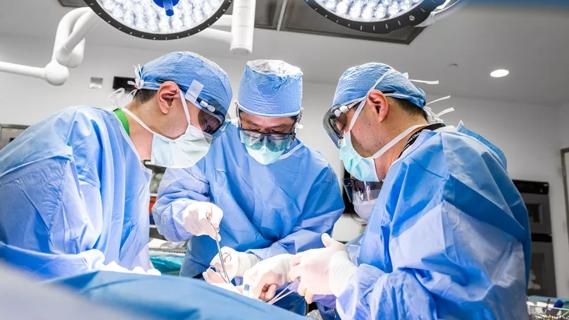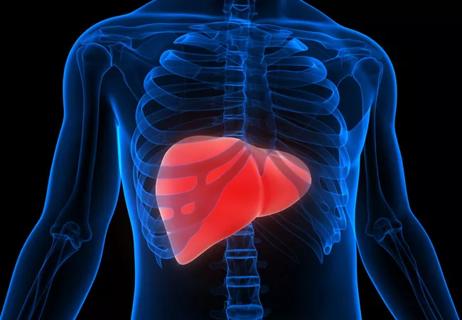Intracystic glucose is considerably more accurate than the current diagnostic standard, carcinoembryonic antigen (CEA), in identifying pancreatic cysts with malignant potential, a multicenter study involving Cleveland Clinic researchers has determined.
Cleveland Clinic is a non-profit academic medical center. Advertising on our site helps support our mission. We do not endorse non-Cleveland Clinic products or services. Policy
Intracystic glucose’s diagnostic accuracy and its other advantages should make it the preferred fluid biomarker to differentiate mucinous neoplastic pancreatic cysts (MNPC) from benign nonmucinous lesions, the researchers conclude.
Prabhleen Chahal, MD, director of Cleveland Clinic’s Advanced Endoscopy Program, and her collaborators, reported the practice-changing findings in the March 2022 issue of The American Journal of Gastroenterology.
While the study is not the first to demonstrate intracystic glucose’s superiority to CEA, it is the first multicenter validation, the first using fresh fluid drawn from pancreatic cystic lesions (PCLs) via endoscopic ultrasound-guided fine needle aspiration, and the first to compare specimens from patients with confirmed histologic diagnoses. Serum CEA concentration may degrade in frozen PCL fluid, which can affect comparison results.
“This is the first study of its kind with freshly aspirated cyst fluid analyzed and corroborated with histologically confirmed MNPC,” she says. “This is what happens in real life.” A very small subset of patients with pancreatic cysts gets endoscopic ultrasound-guided fine needle aspiration.
Pancreatic cystic lesions (PCLs) are a relatively common incidental finding on imaging exams, occurring at a rate of 20% to 25% in the general population. There are two types of PCLs – mucinous neoplastic pancreatic cysts and nonmucinous pancreatic cysts (nonMPCs). MNPCs are common and carry a very small risk of turning malignant, explains Dr. Chahal.
“When we talk about mucinous cysts, we are talking about intraductal papillary mucinous neoplasms (IPMNs) and mucinous cystic neoplasms (MCNs),” she says. “MCNs are largely found in women, more so in the tail of the pancreas, whereas IPMNs are equally prevalent in both men and women.”
There are three different types of IPMNs. Side-branch IPMNs originate in the side branches of the pancreatic duct, main-duct IPMNs originate in the main duct of the pancreas, and mixed-type IPMNs are a combination of the two. “Side-branch IPMNs are the most common and have the least malignant potential ― we estimate the risk to be about 0.5% per year,” she says.
According to Dr. Chahal, differentiating between mucinous and nonmucinous cysts is the first step in determining the cysts’ malignant potential and follow-up surveillance strategy. Surgical resection with histologic confirmation is the gold standard for diagnosing MNPCs, but this procedure is indicated in a very small number of patients with mucinous pancreatic cysts.
“In real life, a vast majority of patients who have cysts never undergo surgery to have histological corroboration,” she says. “So the diagnosis is made based on imaging, such as MRI or endoscopic ultrasound, and cyst fluid analysis. The combination of these allows us to make the diagnosis and follow the patients.”
Current guidelines recommend endoscopic ultrasound-guided fine-needle aspiration (EUS-FNA) of pancreatic cyst fluid in the presence of worrisome symptoms and features on imaging, such as the involvement of the main pancreatic duct or the appearance of solid-looking areas within the cyst.
The concentration of CEA — a tumor biomarker — in the cystic fluid is then determined to distinguish between mucinous and nonmucinous cysts. Current guidelines indicate a value of 192 ng/mL CEA or greater as the cutoff for differentiating MNPCs; however, the sensitivity of this assay varies between 52% and 78%, and its specificity ranges from 63% to 91%, so the biomarker has limitations.
Intracystic glucose has recently shown promise as an alternative to CEA. Research indicates that intracystic glucose concentration is lower in MNPCs compared with nonMNPCs, partly as a result of active neoplastic cells’ glucose metabolism.
Drawing Dr. Chahal’s previous research, she and her colleagues investigated whether intracystic glucose concentration was superior to CEA in differentiating MNPCs from nonMNPCs.
The retrospective study involved patients at three institutions — Cleveland Clinic, University Hospitals of Cleveland and Spain’s Hospital General Universitario de Alicante — who underwent EUS-FNA as part of a diagnostic workup for PCL. Patients were eligible if fresh fluid from a discrete PCL was sampled and tested for CEA and glucose concentration, and if the sampled cyst produced a confirmed histological diagnosis.
A total of 93 patients, 59 with MNPCs and 34 with nonMNPCs, were enrolled. Cyst glucose and CEA analyses revealed that a CEA concentration ≥192 ng/mL differentiates MNPC with a sensitivity of 62.7%, specificity of 88.2%, positive predictive value (PPV) of 90.2%, negative predictive value (NPV) of 57.7% and diagnostic accuracy of 72.04% in differentiating MNPCs. A glucose concentration of ≤25 mg/dL performed significantly better than CEA in differentiating MNPCs, with a sensitivity of 88.1%, specificity of 91.2%, PPV of 94.6%, NPV of 81.6% and diagnostic accuracy of 89.3%.
The researchers also tested the predictive ability of a combination of low glucose and high CEA in comparison with glucose alone. They found that specificity and PPV increased, but sensitivity, NPV and overall diagnostic accuracy declined.
Dr. Chahal believes these findings will lead to a paradigm shift in the diagnosis of MNPCs. In addition to significantly improved sensitivity and specificity, the advantages of using glucose concentration over CEA include the speed of the assay, lower testing costs and improved applicability in community hospital settings.
“Endoscopic ultrasound is performed increasingly in community hospitals. Those hospitals do not yet have the capability of CEA testing, but every hospital has the capability to do glucose testing,” she says. “So generalizability is an important factor.”
Dr. Chahal’s colleagues and Cleveland Clinic already use cyst glucose as the new standard in diagnosing MNPCs, and she is optimistic that other hospitals and medical centers will soon follow in these footsteps. She is now focused on disseminating these findings among her colleagues. Preliminary results were presented at the 2018 and 2021 Digestive Disease Week annual meetings.
“You cannot ignore the data. It’s highly substantial,” she concludes.

Insights from murine models could help guide care for patients

Reviewing how the drug can be incorporated into care

Largest, longest analysis to date shows greater weight loss and fewer diabetes medications needed

The importance of raising awareness and taking steps to mitigate these occurrences

New research indicates feasibility and helps identify which patients could benefit

Standardized and collaborative care improves liver transplantations

Caregiver collaboration and patient education remain critical

Beyond recognizing and treating food allergies, GIs also have a responsibility to address common food allergy misconceptions